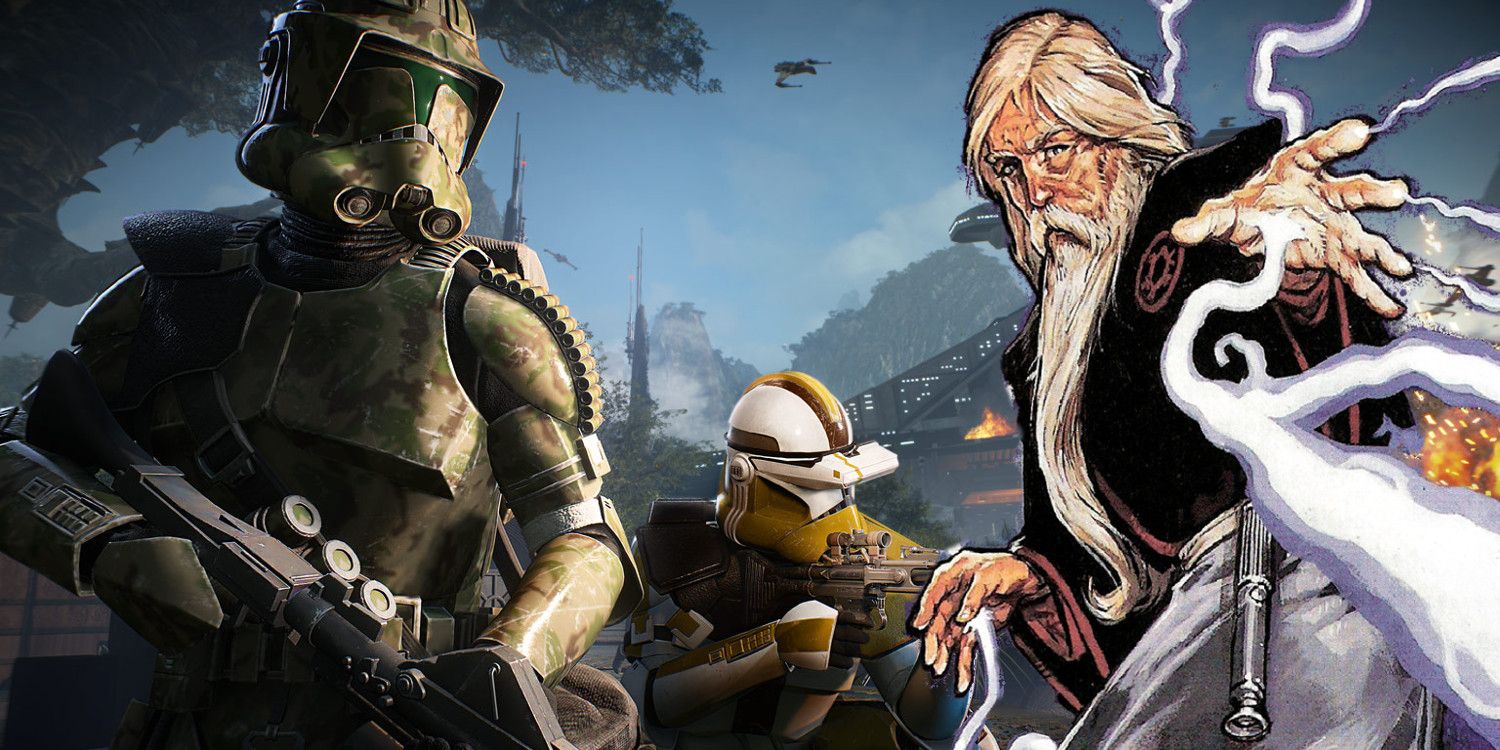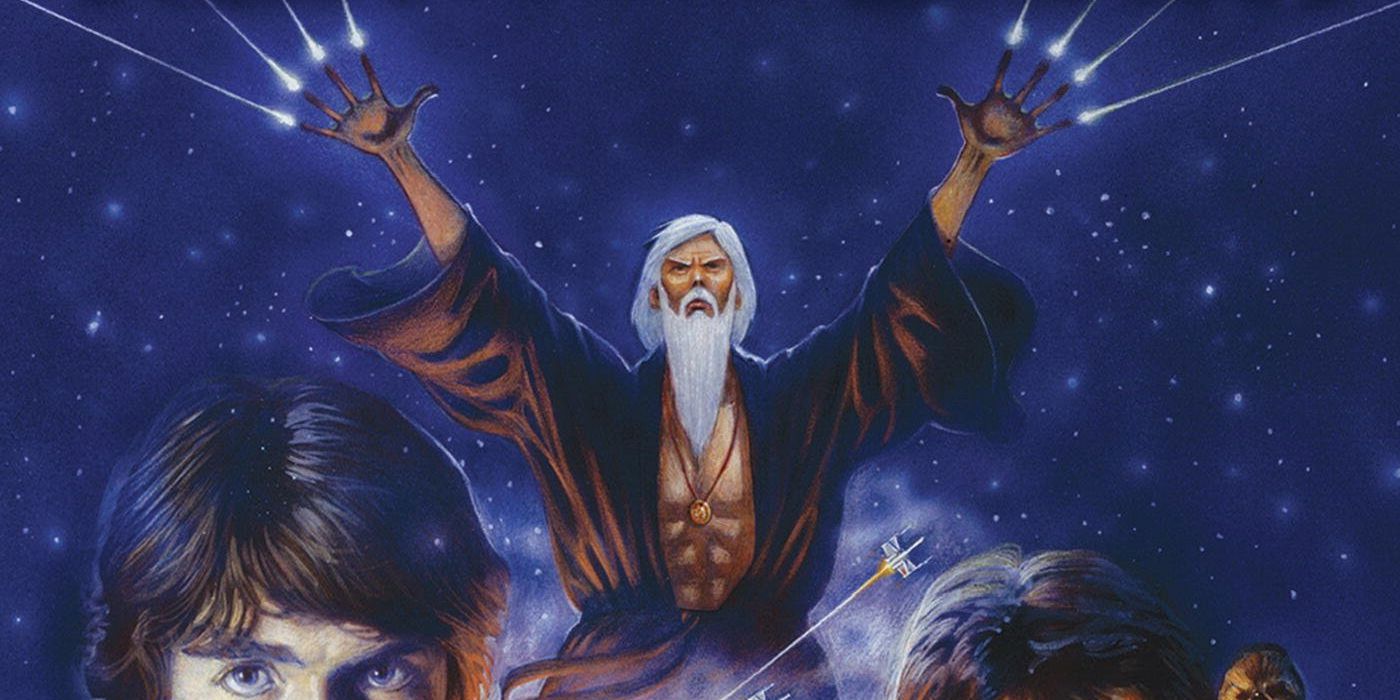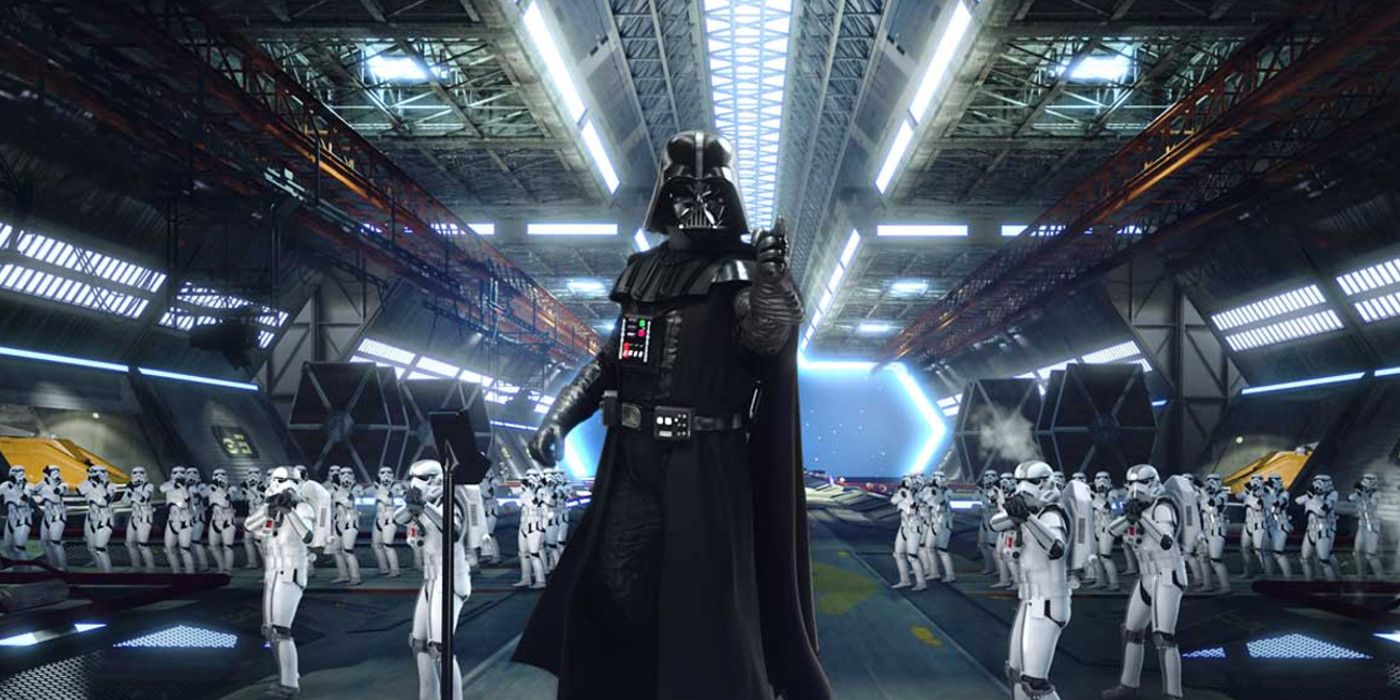
The Clone Wars, as depicted in Star Wars media before the Star Wars prequels and Star Wars: The Clone Wars animated series, were a far different and much stranger event than what everyone saw on the big and small screen. The prequel trilogy did much to render whole swaths of the lore created for the Star Wars Expanded Universe as no longer being canon. Yet no single subject was so heavily altered as that of clones and the science of cloning.
Little was said about the Clone Wars in the original trilogy of Star Wars films, beyond Obi-Wan Kenobi having served as a General in the army of the Old Republic while the Clone Wars were being waged. This gave the writers of comic books, role-playing games and novels using the Star Wars setting from 1977 to 2002 great leeway in developing their own ideas regarding what the Clone Wars had been like. With George Lucas' official plans for the prequel films still top secret at the time and Lucas himself too busy and disinterested to review every single EU story, the duty fell to an overburdened licensing department that wasn't overly concerned with continuity.
Related: Unresolved Star Wars Plot Threads The Clone Wars Can Finally Finish
While later stories published after the prequel trilogy's conclusion in Revenge of the Sith would attempt to smooth over the gaps in the lore and salvage what were widely considered to be the classic tales of the EU, the end result was still a wild, contradictory mess. This ultimately resulted in the whole of the EU being declared non-canon and renamed Star Wars Legends when Disney purchased Lucasfilm in 2012. While several comics and novels published since then have slowly started to reintroduce elements of the EU into the new official timeline, but Lucas had already overridden much of the old Clone Wars stories through the prequels and The Clone Wars animated series, so most of the pre-prequel Clone Wars material has been left untouched.
- This Page: The Clone Wars Happened Earlier
- Page 2: Clones Were Originally The Villains
The Clone Wars Happened Earlier

The chief problem in attempting to reconcile the Star Wars Legends material regarding clones in general and the Clone Wars in specific with Attack of the Clones is one of timing. The films firmly establish that the Clone Wars began 21.5 years before the Battle of Yavin in A New Hope.
The first novel to examine the events of the Clone Wars was Timothy Zahn's Heir to the Empire. Published in 1991, Heir to the Empire was the progenitor of the Expanded Universe and proved a commercial and critical success and many of Zahn's original characters, such as Grand Admiral Thrawn, would become linchpins of the EU. Indeed, the first three novels Zahn wrote for the EU became popularly known as the Thrawn Trilogy.
The problem is that as popular as the Thrawn Trilogy was, it was built around a pretense that had been rendered completely false by Attack of the Clones. When writing Heir to the Empire, Zahn had been told that The Clone Wars had ended in 35 before A New Hope, and based his history around that fact.
Related: Star Wars Rebels is a Proper Conclusion to The Clone Wars
Zahn later suggested that any discrepancies in the dates might be the result of differing calendars being used in different parts of the galaxy and thus confusing future historians, much like the conflicts that arose between scholars using the conflicting Julian and Gregorian calendars in the real world. This idea was later made canon through the introduction of The Great ReSynchronization - a reorganization of the various popular calendars in the Star Wars universe into one Imperial standard. This was later abandoned in favor of the New Republic's Galactic Standard Calendar, which utilized the BBY (before the battle of Yavin)/ABY (after the battle of Yavin) classification.
The end result of this was a massive hand-wave that managed to save several contradictory stories by explaining them as the result of unreliable historians. The early Marvel Comics Star Wars stories which depicted Princess Leia as having fought during the Clone Wars, for instance, could be explained away as Leia being confused with her mother, Padmé Amidala. Of course, all of this was rendered moot when the whole of the EU was declared non-canon with the introduction of Star Wars Legends.
Page 2: Clones Were Originally The Villains

Clones Were Originally The Villains
Another problem with attempting to reconcile the Star Wars Legends stories with the modern canon is the status of clones in relation to the Clone Wars. Prior to the release of Attack of the Clones, it had been largely assumed that the clones were the villains and had been created to fight against the Old Republic. Attack of the Clones revealed that the opposite was true, and that the clone armies of Geonosis proved to be the Old Republic's salvation in the war with the Separatists. For all the complaints that the prequel trilogy inspired, most agreed that Lucas' conceit of turning the clones into the heroes of the Clone Wars was a brilliant twist, given that clones are typically the villains in most science-fiction.
This was the case in Heir to the Empire and the rest of the Thrawn Trilogy, which established much of what was believed about clones and the Clone Wars in the Expanded Universe for two decades. Most of these details were revealed through one of the chief villains of the Thrawn Trilogy, Joruus C'baoth. He was an insane clone of a fallen Jedi master, who sought to reestablish the Jedi Order with himself as Supreme Grand Master and all other Jedi as thralls to his will.
Related: Unfinished Clone Wars Stories We Still Need to See
Through Joruus C'baoth, Zahn introduced the idea of clone madness - the conceit that if a clone was grown too quickly, it would be mentally unstable. It was originally unknown if this was due to rushing the process to create a clone (which was recommended to take 3-5 years) or due to the effect that copying an individual had upon The Force. It was later determined that it was indeed the influence of the Force that caused clone madness, as those clones created in a Force-free zone could be generated in 20 days with no mental or physical degeneration.
Clones of Force users, it seemed, would always develop clone madness, due to the problems the Force suffered in attempting to respond to what was essentially a single person existing in two places at once. Luke Skywalker confirmed this when he was forced to battle Luuke Skywalker - a clone Joruus C'baoth had created from Luke's severed hand and armed with his first lightsaber, both recovered from his battle with Darth Vader at Cloud City.
Virtually everything Zahn developed regarding how The Force perceived clones would be contradicted by The Clone Wars animated series. The idea of clone madness was abandoned outright and the idea that Jedi could not be effectively cloned was disproved by later stories. As for clones being viewed as the same person by the Force, Yoda told a Clone Trooper who despaired at lacking an individual identity that "In the Force, very different each one of you are" in "Ambush."
The Clone Wars Did Not Create The Empire

The largest and most impossible difference to reconcile between the prequel films and the Star Wars Legends material is the conceit that The Clone Wars helped to establish The Empire. Given that the earlier material was based around the idea that the Clone Wars ended 35 years before the events of A New Hope, there really is no way to justify those stories in the current timeline. There is not enough wiggle room within the canon established between the prequel films and the Clone Wars animated series to justify the better part of what was presented in the EU.
Related: Star Wars Explains How Vader Can Return in Episode 9
Ignoring the material written by Zahn which paved the way for most of the Star Wars Legends material, there are still other conflicts between the new history and the old. The first Illustrated Guide to the Star Wars Universe published in 1994 affirmed 35 BBY as the end of the Clone Wars - the same date Zahn had been given. The Farlander Papers - a novella released with the Limited Edition version of the 1993 X-Wing computer game - recalled the history of the galaxy, as told by Mon Mothma, who spoke of "decades of peace" between the end of the Clone Wars and the rise of the Empire. The greatest impossibility, however, lies in reconciling those stories which claimed that President Palpatine declared himself Emperor and exterminated the Jedi long after The Clone Wars were over.
Such justification at this point seems pointless, given that the vast majority of fans are quite satisfied with the history established by the Star Wars: The Clone Wars animated series. For the most part, these older stories are best regarded as a curiosity best pondered by those fans of a scholarly bend who like to examine what was and ponder what might have been. Thankfully, a new wave of novels is even now expanding the universe of Star Wars in the time between Return of the Jedi and The Force Awakens, reestablishing many of the classic characters of Star Wars Legends, if not every single bit of technical minutia. Given that Star Wars is, at its heart, a story of people rather than an examination of hard scientific ideas, this is likely for the best.
More: Disney Fixes its First Star Wars Mistake By Reviving The Clone Wars
from ScreenRant - Feed https://ift.tt/2CXkmoC





No comments: